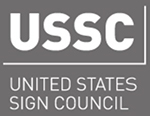Called the SNAP challenge, the experiment involves buying food using only what a family would receive on the Supplemental Nutrition Assistance Program, formerly known as the Food Stamp program.
Shaich, who is blogging about the experience on the career site LinkedIn, is taking up the cause just as the House of Representatives is set to take up a proposal that could cut SNAP funding by $40 billion over the next decade.
Barely halfway through the seven-day challenge, Shaich said Monday that he was already feeling the pangs of hunger.
"I can't stop thinking about food," he wrote. "You probably think I'm joking (or think that must be normal for me since I work for a food company after all), but I promise you it's not."
"Over the last few days, my thoughts have been consumed with food. When is my next meal? How much food is left in my cabinet? Will it get me through the week? What should I spend my remaining few dollars on?"
Shaich said the worry first set in last week when he went food shopping with a budget of $31.50. He realized that loading up on carb-heavy foods and avoiding pricier -- and healthier -- items was his only option.
"I was forced to choose foods that were filling -- items that my Italian mother-in-law would have said will 'stick to my ribs,'" he wrote. "But it isn't lost on me that I wasn't able to afford the fruits, vegetables and meats that most would say belong in a balanced diet."
Shaich is just one of several prominent Americans who are cutting back this week as part of Hunger Action Month, which seeks to highlight the daily challenges of more than 47 million people in the U.S. who rely on food stamps.
The House is scheduled to meet this week on the proposal called the Nutrition Reform and Work Opportunity Act, which would slash SNAP funding by billions. If passed, the law would make 4 million to 6 million Americans ineligible for food stamps, according to the Center on Budget and Policy Priorities.Copyright © 2013, Los Angeles Times
Tags
Subscribe to Parvin-Clauss's Blog







Comments